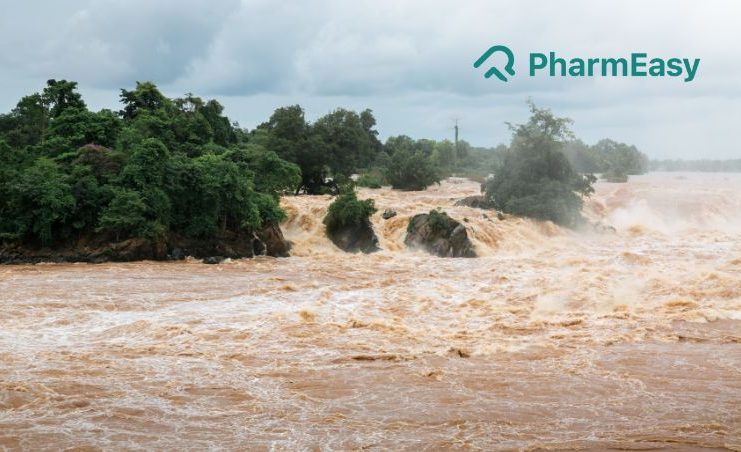Safety Measures During Floods: DOs and Don’ts
By Dr. Nikita Toshi +2 more

Get,

to manage your symptom
Get your,


4 Cr+ families
benefitted

OTP sent to 9988776655



You’ve successfully subscribed to receive
doctor-approved tips on
Whatsapp

Get ready to feel your best.

Hi There,
Download the PharmEasy App now!!


Register to Avail the Offer
Send OTPBy continuing, you agree with our Privacy Policy and Terms and Conditions

Hi There,
Sign up on PharmEasy now!!
Trusted by 4 crore+ families

OTP sent to 9988776655



You have unlocked 25% off on medicines




Code: NU25
By Dr. Nikita Toshi +2 more
Table of Contents
Recently, the cyclone in Chennai led to a flood-like situation, creating a lot of hassle and disruption in people’s daily lives. Apart from materialistic losses, flooding of water brings with it various health risks like an increase in vector-borne diseases, typhoid, jaundice, snakebites, electrocution, etc. While the government and local authorities are doing their very best to improve their alert and evacuation systems, making them more efficient, people are also expected to follow certain preventive measures for floods so that their well-being is not compromised.

The following are certain flood precautionary measures that you should consider prior to a heavy downpour.
When a flood situation arises in a region, you should abide by the following measures in order to avoid panic and chaos:
This is a scenario where everything, including your home, is flooded. There are many dangers, so you need to keep in mind a few things:
Post a flood, cleaning and repairing one’s home is a very important first step with respect to returning to normal life:
If you live in a zone or area which is prone to flooding every year, you should stay well-informed about the types of flooding that can impact and harm your home and community. Such flooding includes river floods, flash floods, coastal floods, storm surges and more. A flood situation can be violent and cause immense damage to public property and health. So, it is important that on the individual level, you need to take proper and necessary flood safety measures to protect your life, health and your home and belongings.
Make sure to keep a check on your neighbours and also help those in need.
Disclaimer: The information provided here is for educational/awareness purposes only and is not intended to be a substitute for medical treatment by a healthcare professional and should not be relied upon to diagnose or treat any medical condition. The reader should consult a registered medical practitioner to determine the appropriateness of the information and before consuming any medication. PharmEasy does not provide any guarantee or warranty (express or implied) regarding the accuracy, adequacy, completeness, legality, reliability or usefulness of the information; and disclaims any liability arising thereof.
Links and product recommendations in the information provided here are advertisements of third-party products available on the website. PharmEasy does not make any representation on the accuracy or suitability of such products/services. Advertisements do not influence the editorial decisions or content. The information in this blog is subject to change without notice. The authors and administrators reserve the right to modify, add, or remove content without notification. It is your responsibility to review this disclaimer regularly for any changes.

Leave your comment...
Comments